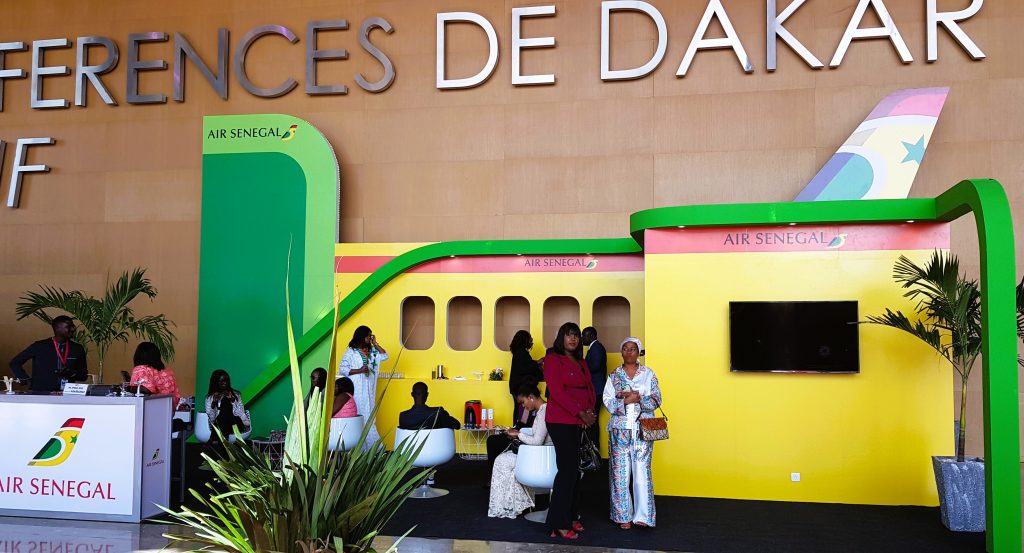A sum up note on the 54th annual general assembly and summit of African Airlines Association held in Dakar, Senegal, from December 11th to 13th 2022. Also, a brief history of the movement towards opening up African skies, the progress and growing relevance. By Thommen Jose, Head of Communication, AirlinePros.
The Centre International de Conferences Abdou Diouf was filled with energy, reverberated with conviction and echoed hope. Speaker after speaker at the AFRAA summit expressed happiness at how efforts to open up commercial aviation across Africa had gained momentum over the years. Surely a lot more needed to be done and the time to act was now.
To lend some perspective, let us look briefly at the historic Yamoussoukro Decision, ‘YD’, drawn up between African ministers of aviation and other important industry leaders in November 1999 in Cote d’Ivoire to liberalize commercial aviation in Africa. To date, the YD remains the single most important air transport reform policy initiative by African governments as it was borne out of a realization that the prohibitive intra-African aviation regulations which were based primarily on Bilateral Air Services Agreements not only hampered improvement but was also a formidable obstacle to expansion.

As we know the aviation sector is vital to the economy of Africa as it is to any other country and continent in the world due to its potential to vastly transform and improve economic and social conditions of the people. The YD calls for full liberalization of air transport in Africa as well as the relaxation – if not total removal – of non-physical barriers to the movement of people, goods and services. Once these objectives are achieved, there will be no stopping Africa – the rising continent.
Air connectivity, as mentioned, is an important measure of a nation’s prosperity and potential for development. Why Africa hasn’t realized its true potential is also because connectivity is still a problem within the continent. Air connectivity in Africa remains focused on international routes with intra-continent connectivity remaining only partially addressed. As Adefunke Adeyemi, Secretary General, African Civil Aviation Commission, AFCAC, put it at the AGA, “There is a near-total lack of connectivity across Africa which has come in the way of our development, and this has to be addressed.”
The Single African Aviation Travel Market or SAATM – around which revolved some animated discussions – is one of the flagship projects of the African Union’s Agenda. SAATM aims to improve intra-Africa connectivity to facilitate tourism, trade, VFR, promotion of cultures and exchange of ideas. “Our renewed focus is on the implementation of SAATM,” Adefunke emphasized. AFCAC is the executing agency of AU on YD and is tasked with creating awareness among stakeholders on the benefits of SAATM.
There is no better time than now for cooperation between all stakeholders to implement SAATM. “How so many airlines tided over COVID is surprising,” as Kamil Al Awadhi, IATA RVP Africa and Middle East, who is also an industry partner of AirlinePros pointed out. Kamil puts the survival on the industry’s resilience which in turn stems from being nimble, smart, quick and endowed with an innate ability to make dangerous decisions. Only that these ‘dangerous decisions’ are especially with respect to finances which makes it just too dangerous. Then fortune favors the brave, right? Kamil also mentioned an IATA forecast which predicted aviation to be out of the blue by 2023 even at low margins.

As of today, 35 countries which represent over 80 per cent of the African aviation market are SAATM signatories. Achma Asokan Foster, CEO of AirlinePros International, is a firm believer in SAATM. “I am sure it can bring about a total transformation of the African continent,” she said. “Many established economies around the world have aviation as a primary foundation like Singapore or the United Arab Emirates, for example. It will be a gamechanger for Africa not just in giving a fillip to air traffic but ensuring progress by developing economies and through employment creation.” IATA estimates that an additional 155,000 jobs will be created as well as US$1.3 billion in annual GDP if just 12 key African countries opened their markets and increased connectivity. The Aeropolitical Task Force which was set up by AFRAA to develop and implement proactive strategies to bring to the table policymakers, regulators and member airlines together and make recommendations on the way forward on many matters including fees, taxes, charges, blocked funds and SAATM among others.
SAATM, all airlines agree whether signatories or not, will be beneficial to everyone in terms of more people traveling, cheaper flights and other economic and social benefits. But reservations over its wider acceptance are largely concerned with the distribution of benefits. However, this shouldn’t be a dampener to take the first step. Of the 35 signatories, 17 have showed a keen desire to start with the implementation. There must be a pilot run where all participant nations will open air markets with no preconditions. The test phase will be a good prelude to a single continental market where infrastructures, technologies and economies are integrated for the bigger good.

“Only Africa can help Africa.” As Jenifer Bamuturaki, CEO of Uganda Airlines, an AirlinePros partner, emphasized.
The need of the hour, as Elcia Grandcourt, Regional Director of UNWTO said, is an ‘unwavering political will.’ This is important as the real beneficiaries of opening up the African skies are the people, the travelers themselves, rather than governments, airlines, operators or owners. This will also, as Joao Carlos Po Jorge, CEO, LAM Mozambique Airlines, also an AirlinePros partner believes, will make flying more sustainable and accessible for the middleclass. Different studies have also shown that the potential for passenger and cargo growth in Africa is substantial and will be wasted if the current regulatory frameworks and policies are not reworked. No better way to sum up the event than by reiterating the clarion call by Aaron Munetsi, CEO of Airlines Association of Southern Africa, AASA:
“Let’s just get started!”
